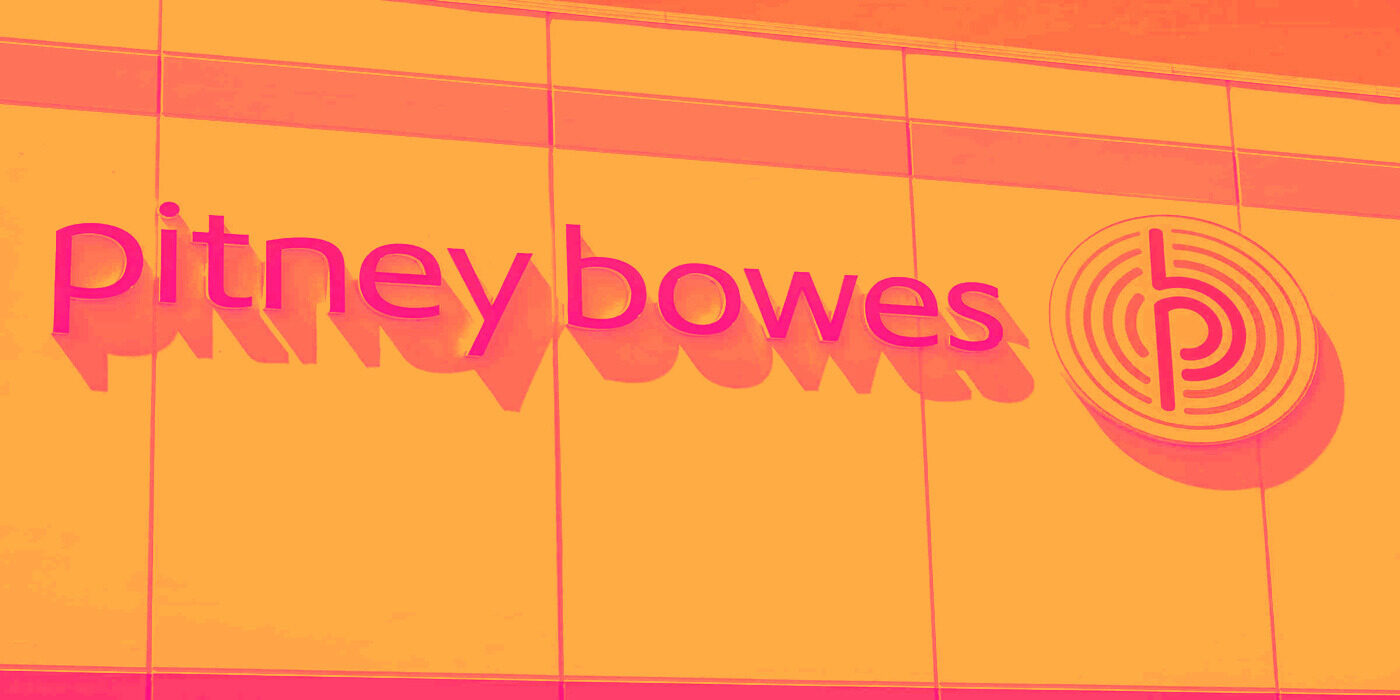
Shipping and mailing solutions provider Pitney Bowes (NYSE: PBI) fell short of the markets revenue expectations in Q3 CY2025, with sales falling 8% year on year to $459.7 million. On the other hand, the company’s outlook for the full year was close to analysts’ estimates with revenue guided to $1.93 billion at the midpoint. Its non-GAAP profit of $0.31 per share was in line with analysts’ consensus estimates.
Is now the time to buy PBI? Find out in our full research report (it’s free for active Edge members).
Pitney Bowes (PBI) Q3 CY2025 Highlights:
- Revenue: $459.7 million vs analyst estimates of $467.4 million (8% year-on-year decline, 1.7% miss)
- Adjusted EPS: $0.31 vs analyst estimates of $0.32 (in line)
- Adjusted EBITDA: $134.8 million (29.3% margin, 81.7% year-on-year growth)
- The company reconfirmed its revenue guidance for the full year of $1.93 billion at the midpoint
- Management raised its full-year Adjusted EPS guidance to $1.30 at the midpoint, a 4% increase
- Operating Margin: 20.7%, up from 13% in the same quarter last year
- Market Capitalization: $1.93 billion
StockStory’s Take
Pitney Bowes' third quarter was marked by revenue falling short of Wall Street expectations, largely due to persistent forecasting difficulties rather than operational setbacks. CEO Kurt Wolf acknowledged these challenges, noting, "We are still tripping up on past mistakes, but are aggressively attacking and fixing issues as they arise." The company cited positive operational progress, particularly in its Presort and SendTech segments, but admitted that outdated forecasting processes led to a disconnect between internal performance and reported results. Management's candor about the root causes of underperformance set a more cautious tone for the quarter.
Looking forward, Pitney Bowes is focused on stabilizing its leadership team, restructuring business processes, and executing cost reductions to support profitability. Management emphasized an aggressive approach to fixing structural issues, with Wolf stating, "We continue to enhance our talent, structure and processes to support future growth of the business." The company sees opportunities to slow revenue declines in mailing, pursue accretive acquisitions in Presort, and achieve significant cost savings across all business units. However, management is aware that realizing these improvements depends on effectively addressing internal inefficiencies and adapting to ongoing shifts in the competitive landscape.
Key Insights from Management’s Remarks
Management attributed the quarter's results to ongoing forecasting issues, while highlighting operational improvements, leadership changes, and cost-saving initiatives as key levers for future performance.
- Forecasting process overhaul: CEO Kurt Wolf and CFO Paul Evans acknowledged repeated forecasting problems that hindered the company’s ability to meet revenue targets despite operational progress, emphasizing that legacy processes are being aggressively reworked with outside help to improve accuracy and decision-making.
- SendTech transition and leadership: The SendTech segment saw revenue declines begin to stabilize as the impact from the IMI (Intelligent Mail Indicia) migration faded. Wolf highlighted the strategic hiring of Todd Everett, formerly of Newgistics, to drive profitable growth and slow the decline in mailing.
- Presort margin volatility: Presort’s profitability was heavily impacted by lost volume, with management noting high fixed costs in the business. Evans explained that even slight volume changes have an outsized effect on margins, making volume recovery and potential acquisitions critical to future performance.
- Cost reduction and restructuring: A new round of cost cuts totaling $50–$60 million across all divisions was implemented, driven by a management-led review aiming to improve efficiency, not just reduce expenses. These efforts are expected to be largely completed by the end of next year.
- Shift in capital allocation: The company continued share repurchases and debt reduction, supported by strong free cash flow. Management indicated a willingness to adjust capital allocation dynamically, balancing buybacks, debt retirements, and small acquisitions based on market conditions and business needs.
Drivers of Future Performance
Pitney Bowes’ outlook is shaped by cost savings, targeted acquisitions, and efforts to slow declines in key segments as it navigates industry headwinds.
- Cost savings implementation: Management expects the ongoing $50–$60 million cost reduction program to drive margin improvements, with most benefits to be realized within the next year. These savings come from restructured operations and streamlined processes rather than external mandates.
- Presort acquisition opportunities: With smaller competitors in the Presort segment facing financial strain, Pitney Bowes anticipates more acquisition opportunities, which management views as highly accretive due to the business’s high fixed cost structure. Successful deals could quickly enhance profitability as excess capacity is absorbed.
- Mailing segment stabilization: By focusing on underinvested areas of the mailing business and removing internal sales process bottlenecks, the company aims to decelerate revenue declines. Leadership changes and realigned incentives are expected to support this initiative, even as the broader market remains in structural decline.
Catalysts in Upcoming Quarters
In the coming quarters, our analyst team will closely watch (1) the effectiveness of cost reduction efforts and whether operating margins improve as planned, (2) the pace at which Presort volumes recover and the success of any targeted acquisitions, and (3) progress in slowing revenue declines in mailing through streamlined processes and leadership changes. The resolution of forecasting issues and ongoing leadership stability will also be important markers of execution.
Pitney Bowes currently trades at $10.80, down from $11.21 just before the earnings. Is there an opportunity in the stock?See for yourself in our full research report (it’s free for active Edge members).
Our Favorite Stocks Right Now
Donald Trump’s April 2025 "Liberation Day" tariffs sent markets into a tailspin, but stocks have since rebounded strongly, proving that knee-jerk reactions often create the best buying opportunities.
The smart money is already positioning for the next leg up. Don’t miss out on the recovery - check out our Top 9 Market-Beating Stocks. This is a curated list of our High Quality stocks that have generated a market-beating return of 183% over the last five years (as of March 31st 2025).
Stocks that made our list in 2020 include now familiar names such as Nvidia (+1,545% between March 2020 and March 2025) as well as under-the-radar businesses like the once-small-cap company Comfort Systems (+782% five-year return). Find your next big winner with StockStory today.
StockStory is growing and hiring equity analyst and marketing roles. Are you a 0 to 1 builder passionate about the markets and AI? See the open roles here.






